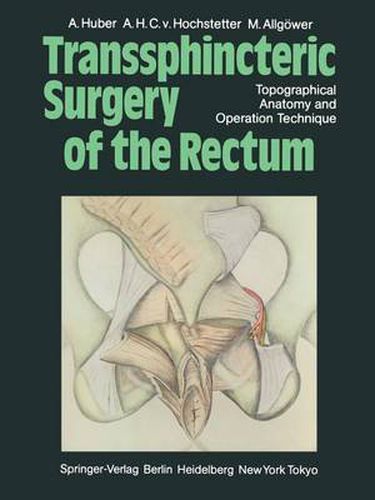Readings Newsletter
Become a Readings Member to make your shopping experience even easier.
Sign in or sign up for free!
You’re not far away from qualifying for FREE standard shipping within Australia
You’ve qualified for FREE standard shipping within Australia
The cart is loading…






This title is printed to order. This book may have been self-published. If so, we cannot guarantee the quality of the content. In the main most books will have gone through the editing process however some may not. We therefore suggest that you be aware of this before ordering this book. If in doubt check either the author or publisher’s details as we are unable to accept any returns unless they are faulty. Please contact us if you have any questions.
More than a century ago, Cripps successfully employed the direct and complete division of the anal sphincters as a means of approaching the lower rectum and anal canal, and reported on a series of 36 patients who had been treated in that fashion. Cripps was pleasantly surprised to find good fecal continence in over two-thirds of the patients during later follow-ups, despite the fact that the divided sphincters had not been repaired. The transsphincteric procedure was largely forgotten in subsequent years, however, and only the parasacral proctotomy of Kraske, which spared the anal sphincters, can be said to have gained an established place in the surgical armamentarium.
It remained for York Mason to redirect the attention of the surgical community to the great potential of the trans sphincteric approach and the excellent continence that can be achieved through adequate repair of the divided sphincters. Having recognized the outstanding practical value of this procedure, we felt it necessary to define more precisely the anatomical prerequisites that would ensure minimum operative bleeding, and to bring the procedure more in line with current knowledge of normal continence and defecation. Dr. A. Huber, in consultation with the director of the Institute for Clinical Anatomy of our surgical department, Prof. A. von Hochstetter, did many months of dissection work on fresh anatomic preparations in an effort to explore and refine the various aspects of the trans sphincteric ap proach.
$9.00 standard shipping within Australia
FREE standard shipping within Australia for orders over $100.00
Express & International shipping calculated at checkout
This title is printed to order. This book may have been self-published. If so, we cannot guarantee the quality of the content. In the main most books will have gone through the editing process however some may not. We therefore suggest that you be aware of this before ordering this book. If in doubt check either the author or publisher’s details as we are unable to accept any returns unless they are faulty. Please contact us if you have any questions.
More than a century ago, Cripps successfully employed the direct and complete division of the anal sphincters as a means of approaching the lower rectum and anal canal, and reported on a series of 36 patients who had been treated in that fashion. Cripps was pleasantly surprised to find good fecal continence in over two-thirds of the patients during later follow-ups, despite the fact that the divided sphincters had not been repaired. The transsphincteric procedure was largely forgotten in subsequent years, however, and only the parasacral proctotomy of Kraske, which spared the anal sphincters, can be said to have gained an established place in the surgical armamentarium.
It remained for York Mason to redirect the attention of the surgical community to the great potential of the trans sphincteric approach and the excellent continence that can be achieved through adequate repair of the divided sphincters. Having recognized the outstanding practical value of this procedure, we felt it necessary to define more precisely the anatomical prerequisites that would ensure minimum operative bleeding, and to bring the procedure more in line with current knowledge of normal continence and defecation. Dr. A. Huber, in consultation with the director of the Institute for Clinical Anatomy of our surgical department, Prof. A. von Hochstetter, did many months of dissection work on fresh anatomic preparations in an effort to explore and refine the various aspects of the trans sphincteric ap proach.